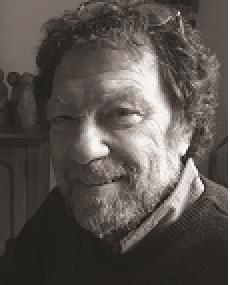People category:

Zanele Muholi is a photographer and visual activist based in Johannesburg. Muholi’s work has been recognized for its radical emphasis on marginalized communities in South Africa, exploring queerness, blackness, femininity, and the intersections in between. Her photographs are an attempt to create an archive and dialogue surrounding both blatant and epistemic violence against black queer communities in South Africa. “This is a time for a visual state of emergence,” she says. “The preservation and mapping of our herstories is the only way for us black lesbians to be visible.”
Across her work, she chronicles that which is systematically erased from both South African and international narratives: lesbian weddings, trans men dressing in tuxedos, survivors of ‘corrective rape,’ lovers in bed together. Muholi’s pictorial archive offers visibility to the invisible, history to the erased, and celebration to the stigmatized.
Despite their political potency, Muholi’s portraits do not exploit their subjects for a progressivist agenda. They are deeply intimate, sensitive, and organic: close-ups of women kissing, dancing at weddings, bathing in colorful baths. This kind of representation challenges the centuries-long project to commodity the black female body as the African other and the object of a patriarchal colonial imagination. ‘I refused to become subject matter for others and to be silenced,’ says Muholi. ‘Many have exiled our female African bodies: by colonisers, by researchers, by men. Sarah Baartman became a spectacle for Europeans, and she died in a foreign land. She was never given a chance to speak for herself. It is for this reason that I say No, not yet another black body.’
What’s more, Muholi’s photographs are beautiful, visually stunning and immaculately rendered as they are socially exigent. Despite her growing popularity and widely positive reception over the course of the last decade, Muholi continues to document, photographing friends, strangers, communities on the fringe, and recently, herself. Looking at Muholi’s body of work as a singular, collective archive of history, identity, and experience, we are asked to question the types of images we see, the stories are told, the histories we are taught. Who is left out of that narrative? Who are we still not seeing? Zanele Muholi makes us see, makes us feel all the contradictions of looking: discomfort, sadness, pain, and radical joy.
Biography
Born in 1972, Muholi grew up in Umlazi, a township in Durban on the east coast of South Africa. She studied photography at the Market Photo Workshop in Newtown, Johannesburg, where she celebrated her first solo exhibition 'Visual Sexuality: Only Half the Picture' held at the Johannesburg Art Gallery in 2004. Since then, Muholi’s work has attracted attention from academic circles, intersectional feminists, LGBTQI activists, and the international art world alike.
She co-founded the Forum for Empowerment of Women (FEW) in 2002, and in 2009 founded Inkanyiso (www.inkanyiso.org), a forum for queer and visual (activist) media. Dedicated to representing issues central to the black queer and trans communities in South Africa, she continues to facilitate photography workshops for young women in various townships. Muholi studied Advanced Photography at the Market Photo Workshop in Newtown, Johannesburg, and in 2009, completed an MFA in Documentary Media at Ryerson University, Toronto. She is an Honorary Professor at the University of the Arts/Hochschule für Künste Bremen. Muholi has won numerous awards including the ICP Infinity Award for Documentary and Photojournalism (2016); the Outstanding International Alumni Award from Ryerson University (2016); the Fine Prize for an emerging artist at the 2013 Carnegie International; a Prince Claus Award (2013); the Index on Censorship – Freedom of Expression art award (2013); and the Casa Africa award for best female photographer and a Fondation Blachère award at Les Rencontres de Bamako biennial of African photography (2009). Her Faces and Phases series has shown at, among others, Documenta 13; the South African Pavilion at the 55th Venice Biennale; and the 29th São Paulo Biennale. She was shortlisted for the 2015 Deutsche Börse Photography Prize for her Faces and Phases 2006 – 14 (Steidl/The Walther Collection). Muholi is currently included in the exhibition African Art against the State, on view at the Williams College Museum of Art, Williamstown, Massachusetts through August 2016.
Sources
Zanele Muholi largely draws inspiration from local South African black queer communities, including herself and her friends. Her work is informed by a long history of oppressive colonization, which lays the structural foundation of how we imagine blackness, the female body, queer sexuality, and representation today. Her work is also informed by contemporary South African politics, a system that constitutionally protects the rights of queer people, but often fails to defend them from targeted violence.
Currently
For the past few years, Muholi has largely turned the camera around on herself, practicing self-documentation in the form of portraiture and performance. An ongoing project, “Somnyama Ngonyama” finds the artist using self-portraiture as a tool of intimacy, serving as commentary on contemporary political and cultural issues that affect black people in Africa and its diaspora. Her most recent exhibition will be on view until September 25th, 2016 as a part of Rencontres d'Arles photography festival in Arles, France. ”Somnyama Ngonyama” was also featured in a solo show at the Albany Museum in Grahamstown during the National Arts Festival. Muholi is additionally set to take part in the ninth annual Berlin Biennale, showing on the lightbox project “LIT” until September 2016. Her work will also be featured in group exhibitions highlighting lesbian history, activist art, and African creativity in Oslo, Norway; Barcelona, Spain; Port Louis, Mauritius; and Williams College, Massachusetts.

















